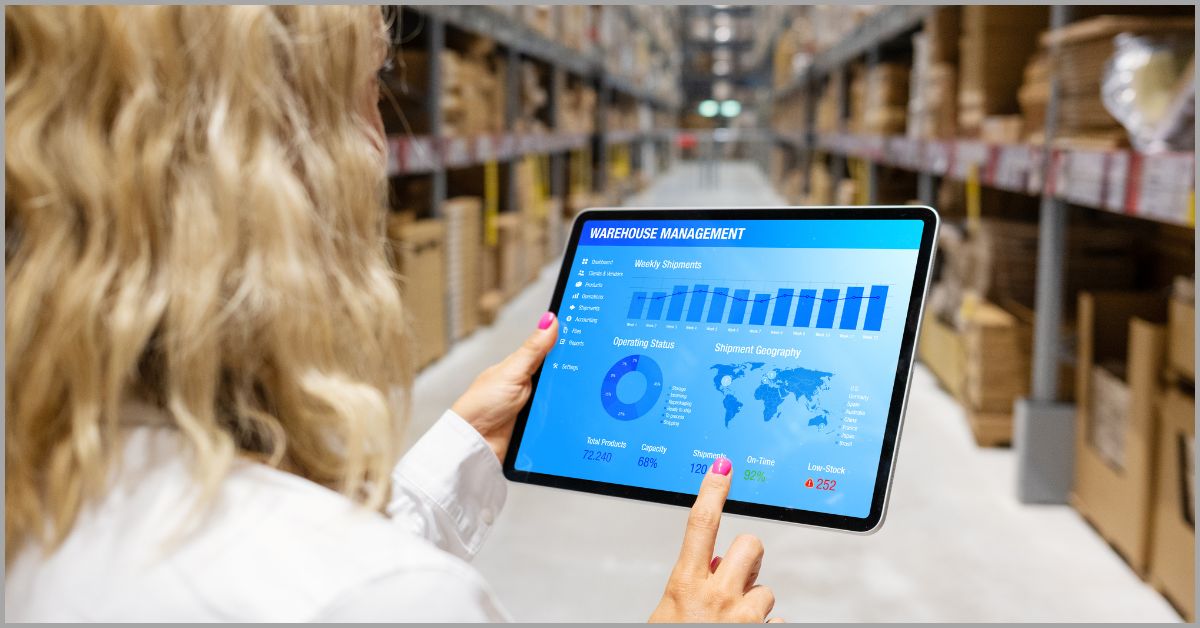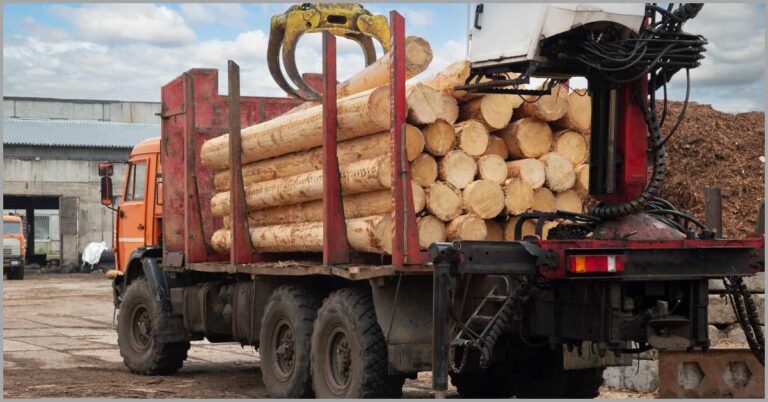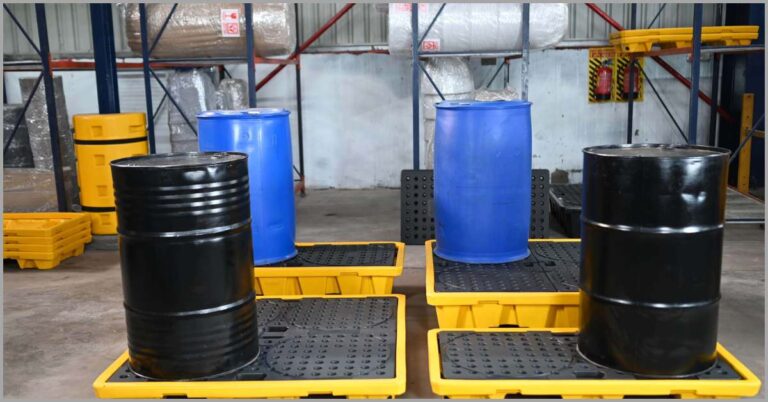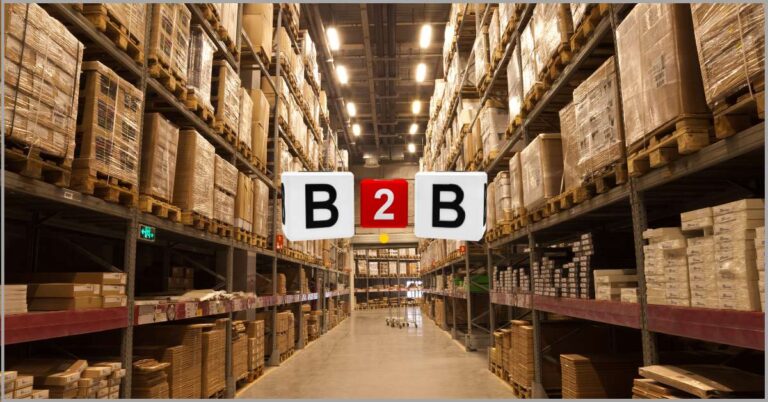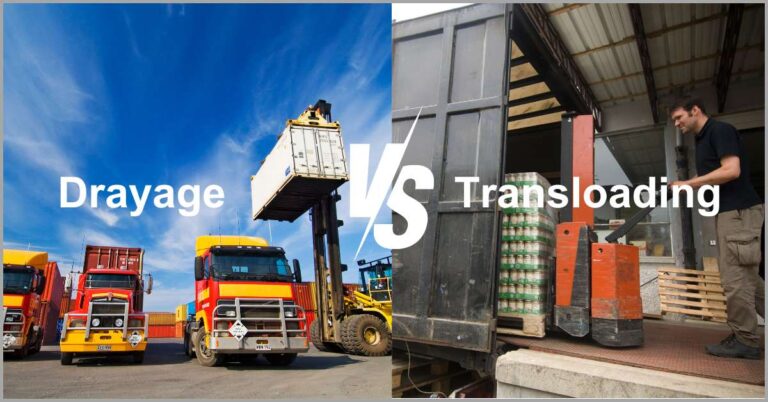10 Warehouse Management Trends Revolutionizing Logistics in 2024
What are the prevailing trends in warehouse management?
To stay competitive, you need to know the latest warehouse innovations in logistics.
This is because being aware of the prevailing trends empowers you to adapt your warehousing operations to ensure continued business success.
A study by Zebra Technologies revealed that 73% of warehouses face immense pressure to implement new technologies. This is largely driven by competitive factors.
By figuring out the warehouse management system trends that are making waves in the industry, you can modernize and even automate your warehouse using the latest technologies to improve business efficiency, productivity and competitiveness.
They will also enable you to lower your labor costs and future-proof your business so that you’re adaptable to market fluctuations and constantly shifting consumer demands.
In this article, we’ll discuss warehouse management trends revolutionizing logistics in 2024 to help your business become more profitable and a competitive industry leader.
Let’s get started.
1. Cloud computing
Still relying on a traditional warehouse management system?
At the moment, it may seem to be getting the job done just fine. You’re receiving orders, processing inventory and customers appear to be generally content. However, as your business grows and scales, that will quickly take a turn for the worse.
With traditional and inflexible warehouse management systems, scaling your operations means making a lot of expensive and cumbersome upgrades.
In 2024, approximately 89% of businesses have multi-cloud technologies in place for their businesses, according to a recent survey by Flexera. This represents a significant rise from the previous years and it’s a trend that’ll only gain more momentum.
One of the top reasons for this increasing adoption is the low-maintenance costs that come with embracing cloud computing tools like cloud-based WMSs.
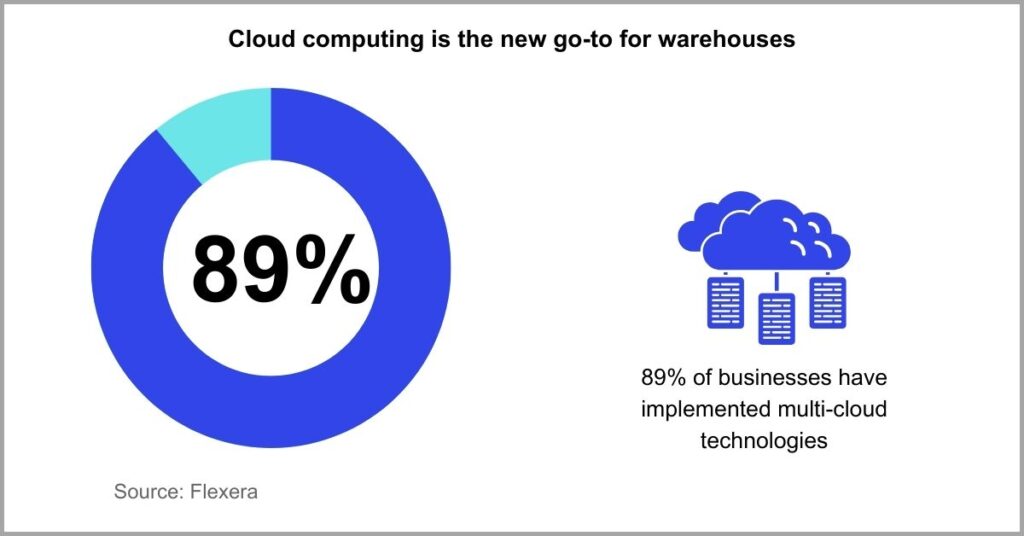
In fact, many of the best B2B WMS solutions have embraced warehouse management system trends like cloud computing because it offers your business limitless scalability.
They leverage a variety of online technologies, such as distributed cloud computing for example, to give you real-time updates about various warehouse workflows like inventory and orders, which improves process visibility and efficiency.
In addition, such platforms also offer seamless integration with other systems.
They simplify the integration processes by streamlining data exchange to enable information to flow more freely across your existing software solutions.
Click here to start your free transloads.co trial to take our proven cloud-based warehouse management software for a spin.
With our platform, you’ll gain the capacity, speed and business intelligence to be able to handle increased workloads as you grow without needing to overhaul your workflow.
2. Barcode inventory counting
Physical inventory counting is tiresome work.
It can take up hours of valuable time more so if your warehouse also provides picking and packing services not to mention the errors you’ll endure from data entry mistakes.
So when your inventory counting processes are primarily manual, you can easily get inaccurate stock levels that lead to shrinkage and revenue loss.
Unfortunately, retailers lose 1.33% of sales annually because of inventory shrinkage caused by inventory errors and fraud, according to an NFR study. So if you make $3 million in sales, that may mean up to $39,990 in lost revenue.
This is more than enough funds to help you buy new equipment, give all your staff a raise, or try out new markets, thereby emphasizing the need for more accurate inventory counting solutions such as barcode scanners.
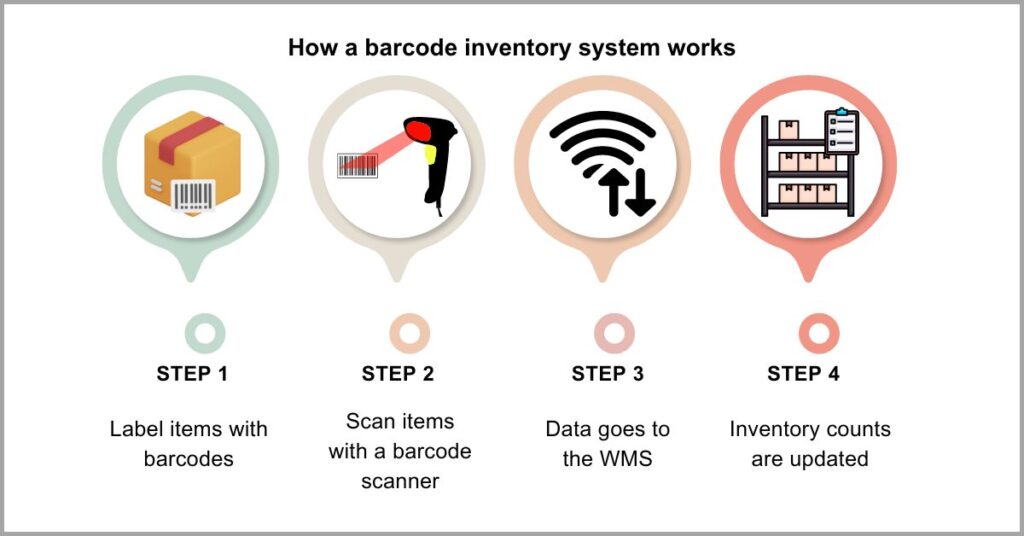
So how does barcode inventory counting work?
First, inventory items are fixed with barcode labels which have encoded information about the description of the item. You can then use a barcode reader to scan items, while it updates the quantities and other data of the stock as you process them.
With dedicated barcode scanners often expensive given the sheer number you’d need, we’re also noticing the rise of warehouse management software features like mobile app-based barcode scanning.
This essentially enables you to process barcodes with a mobile device, thereby ensuring cost-effective inventory counting by eliminating the need for special hardware.
With barcode inventory counting, you can speed up your warehouse’s receival processes, reduce counting errors and gain a more accurate perception of inventory levels in real time to help you meet customer demands and avoid lost sales.
3. Pick-to-light systems
How much time do your workers spend on picking?
Picking and putaway are two iterative and time-consuming processes that are necessary to keep your workflow moving. However, given how much time they eat up, these tasks probably consume the lion’s share of your labor expenses.
Beyond being time-intensive, traditional picking and putaway strategies also increase the potential for human error that leads to inaccurate order fulfillment.
In 2022, at least 56% of product returns were because of inaccurate order fulfillment, going by a survey by Statista. This made it one of the top three reasons why consumers choose to return bought items.
With product returns often attracting very expensive reverse logistics, in addition to scaring away customers, it’s understandable why focus is shifting to warehouse management system trends like pick-to-light systems to improve fulfillment accuracy.
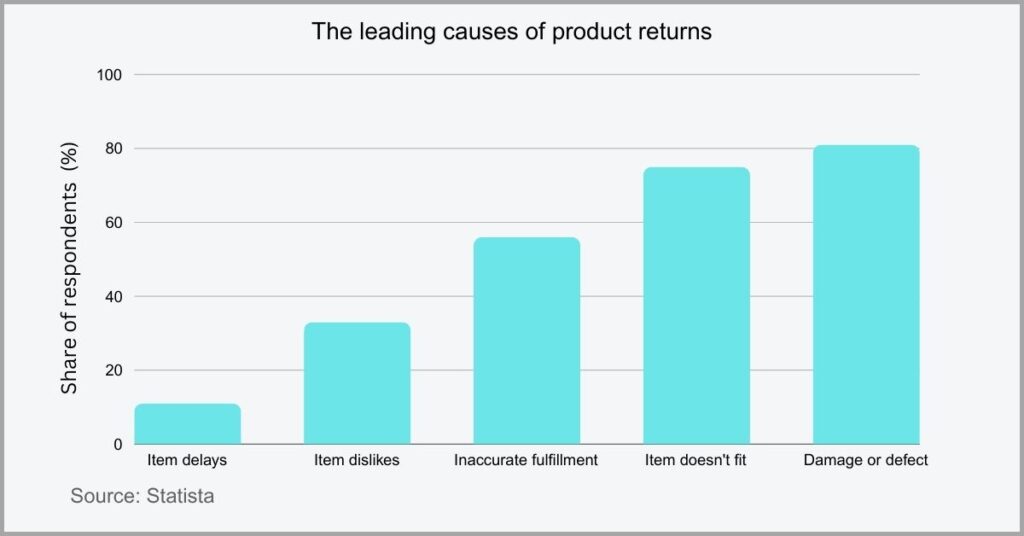
Pick-to-light and put-to-light systems are streamlining picking processes to help to take your warehouse’s productivity and efficiency to new levels.
This technology links up with B2B Inventory management software solutions to first receive orders and then lights up LEDs at the location of specific inventory items.
You can then walk up to the blinking LED displays to retrieve the quantities of items specified and then press a button on the device to confirm order completion. In doing so, this ensures fast item retrieval to minimize travel time for your warehouse pickers.
On the other hand, put-to-light systems use light modules to direct you on where to place new inventory items as you receive them. With such systems ensuring accurate putaway, they lay the base for more accurate and efficient inventory picking as well.
4. Intelligent demand forecasting
Demand forecasting is a crucial process for your warehouse.
It enables you to predict changes in market demand so that you can make informed decisions about strategic inventory stock management. However, the problem with traditional inventory forecasting strategies is that they aren’t always on the money.
When inventory forecasting is poor, you can experience strained relationships with suppliers and customers in addition to overstocking or understocking.
Alarmingly, an IHL study discovered that businesses lost $1.77 trillion to inventory distortion in 2023. The leading cause was out-of-stock situations that accounted for $1.2 trillion of that amount, with overstocking accounting for the remainder.
Upon closer scrutiny, I noticed this boiled down to poor demand forecasting that led to unstable inventory, whereby you’d have too few items to meet demand or too many items compared to demand.
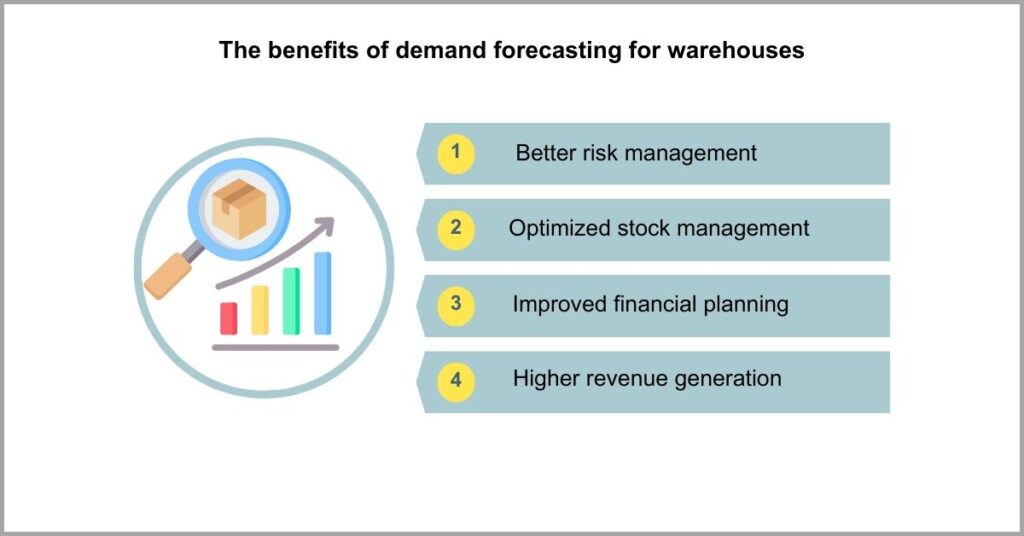
So what is intelligent demand forecasting & how does it help?
This is basically an AI-driven system of predicting customer demand and inventory needs by taking into account a wealth of data to inform more accurate estimates.
For example, machine learning algorithms may consider SKU level data as well as sales channels and locations, among various other information, to calculate demand.
In cases of new products with little to no sales history, they can simulate demand based on similar product types and categories in your inventory. They’ll then update the forecasts as the new item generates data to improve forecasting.
If you’re just starting your warehouse, intelligent demand forecasting is a game-changer.
It can help you to predict demand and optimize stock levels so that you maintain a lean and cost-efficient inventory while still keeping enough items on-hand to avoid stockouts.
5. Mobile-driven WMS platforms
Legacy WMSs are traditionally desktop-centric.
They operate largely via a desktop application, which is unideal because it restricts access to data to a single location. This can mean increased traveling time as you have to move back and forth across your warehouse to retrieve information to perform tasks.
In addition to decreasing warehouse worker productivity, warehouse management systems that aren’t mobile friendly also increase expenses.
In fact, 85% of warehouses plan to begin their modernization by equipping warehouse workers with mobile devices, according to a survey by PRG. As a result, many of them are prioritizing mobile-friendly warehouse management systems.
Besides being convenient, mobile-first WMSs are also desirable for the increased productivity that they promise. So I reckon it’s one of the warehouse management system trends that will catch on even more in the coming years.
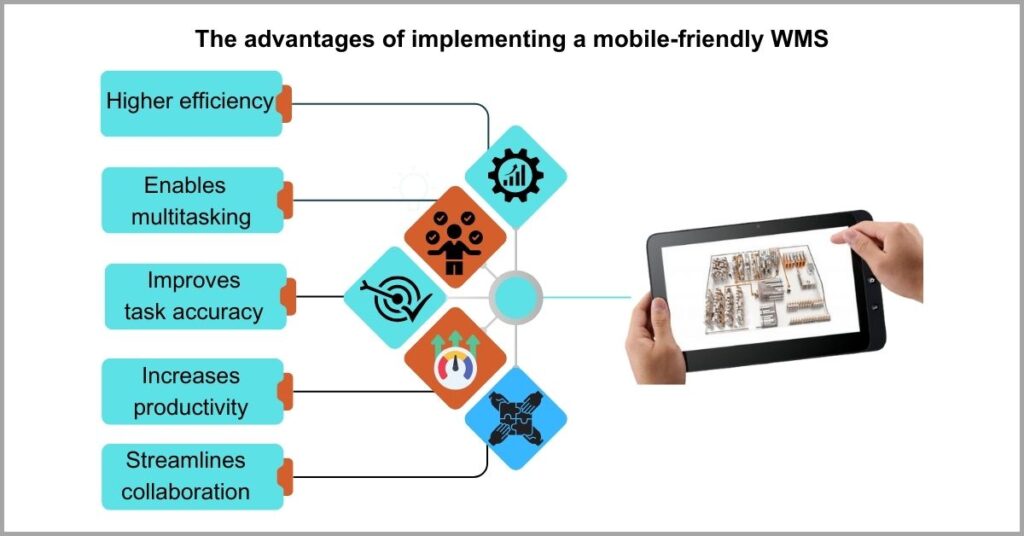
So how are mobile optimized solutions changing warehousing?
As a warehouse manager, you get real-time information about workers, inventory, orders and more, all on mobile devices such as a smartphone or tablet. This gives you the flexibility to multitask and efficiently coordinate operations from any location.
If you run a warehouse with a huge yard stuffed with assets like containers, railcars and trucks, mobile-friendly warehouse yard management software solutions become even more important for increasing your efficiency.
They untether your warehouse workers from a single geographical location, giving your workforce greater mobility to perform tasks across warehouse floors and yards.
What’s more, mobile-driven WMSs also ease information sharing and also streamline communication between your warehouse crew. This improves collaboration and in turn helps to realize faster order fulfillment and greater customer satisfaction.
6. ESG performance tracking
Do you track your warehouse’s ESG performance?
The push for greener and more sustainable supply chains has only gotten more intense with worsening climate change. Today, your business is under an increasing amount of pressure from governments, investors and customers to lower its carbon footprint.
When you fail to track and improve your ESG performances, you’ll be hurting not only the environment but also your warehouse business’s reputation too.
A PWC survey revealed that 75% of consumers say more needs to be done to preserve the environment and that you have just as much responsibility to enact environmental change as the government. So it’s clear just how important this is to your customers.
Besides addressing customer’s concerns about sustainability, ESG performance tracking can also help increase investor confidence and funding.
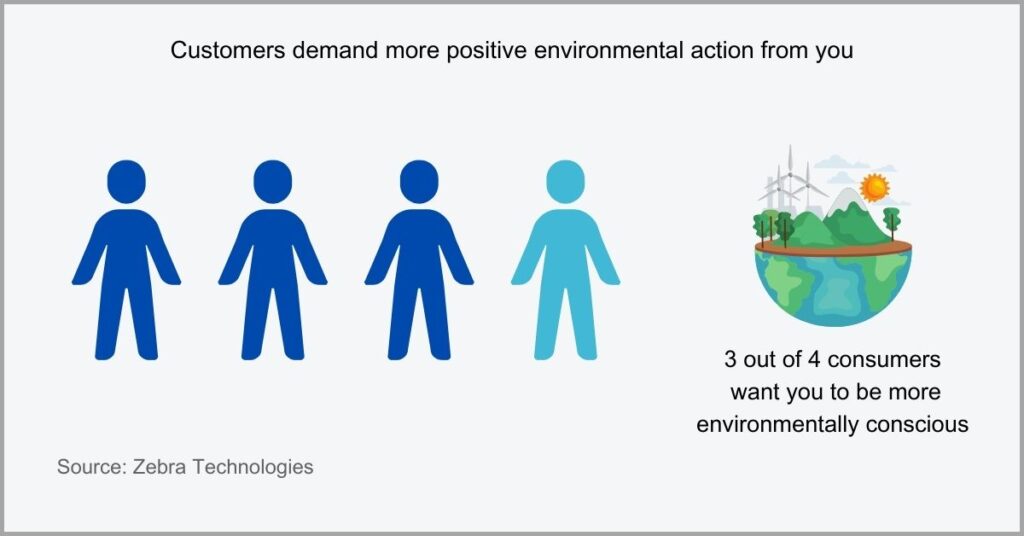
While warehouse management systems are contributing to sustainable warehousing by helping to automate processes and minimize waste from various supply chain operations, modern solutions are going a step further with ESG reporting capabilities.
These features are helping to standardized ESG reporting so you can tailor a strategy around universally acceptable standards to improve your ESG program’s credibility.
If you have very complex transloading and intermodal shipping networks, you can rely on these capabilities to track ESG data around resource utility trends and greenhouse gas emissions to inform more sustainable warehouse management practices.
What’s more, these tools also have labor management dashboards that help you to implement gender diversity and sort out labor issues at large.
In addition, modern warehouse management systems are also incorporating regulatory compliance tracking to help bolster your ESG strategy and improve your brand image.
7. Voice-activated WMS solutions
Speech recognition is also revolutionizing warehousing.
This technology lets you communicate with your warehouse management system using audio channels much in the same way you’d liaise with a human manager to receive instructions about picking, sorting and other warehouse tasks.
While handheld technologies increase operational efficiency for the most part, they can sometimes get in the way of warehousing tasks that require both hands.
In fact, voice-picking systems can increase productivity by 35% for warehouse workers, according to a study by Polaris, which also shows a 14% CAGR for this technology. This shows how the technology is quickly becoming a staple of many modern workflows.
While most voice-activated WMS platforms encompass voice-picking solutions, we can expect this is one of the warehouse management system trends that will also be put to work in other aspects of warehousing.
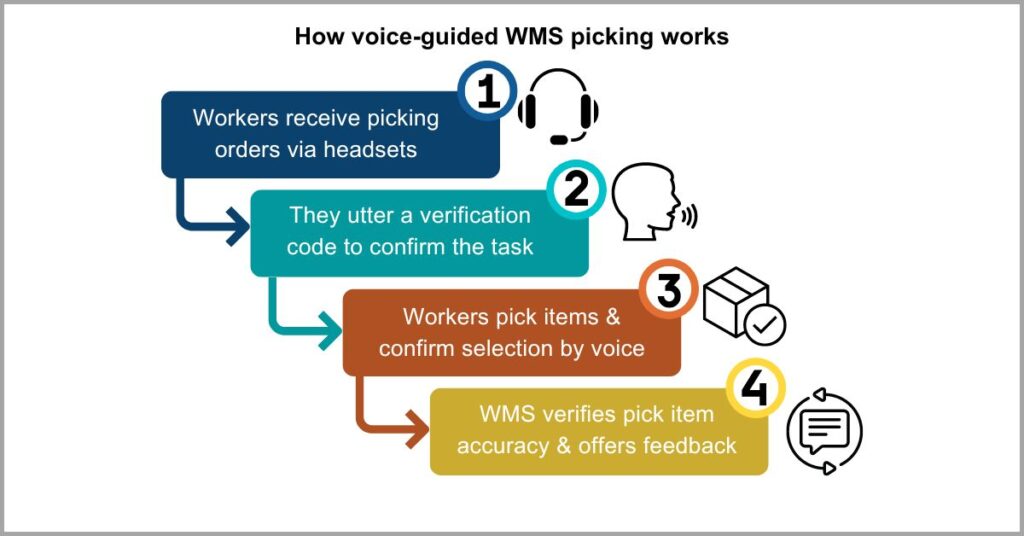
But what are the benefits of a voice-activated WMS?
For one, it ensures greater freedom and flexibility to multitask given that they are essentially hands-free, thereby uplifting your productivity.
It’s also raising the accuracy of warehousing processes like picking since it offers step-by-step verbal instructions, letting you complete and confirm tasks in real time. In turn, this also results in fewer picking errors while lowering worker management tasks.
So it’s easy to see why choosing a transloading software with voice-picking is appealing because it would mean faster order fulfillment and therefore more revenue.
For all their potential, however, voice-guided WMSs are still far from perfect.
They may fail to accurately recognize voice commands especially from non-native speakers, while the need to customize them to accommodate different accents can also attract complex finetuning and software customization processes.
8. Omnichannel warehouse management software
Do you have multiple sales channels setup?
You may have created different platforms to cater to various segments of your business’s market. Each of these channels may even have their own inventory & order fulfillment processes that run separately from the rest of your warehouse operations.
However, when there’s a lack of proper coordination between different channels, this can result in duplicated efforts, poor brand experiences, and lost sales.
A study by McKinsey revealed that businesses use up to 5 channels to interact with customers, fulfill their orders or resolve various issues. With the rise of new platforms, this number will only increase thereby adding to the strain of omnichannel retail.
This is why warehouse management system trends such as omnichannel WMS platforms are becoming popular because they can help you to ensure seamless and consistent brand experiences across the board.
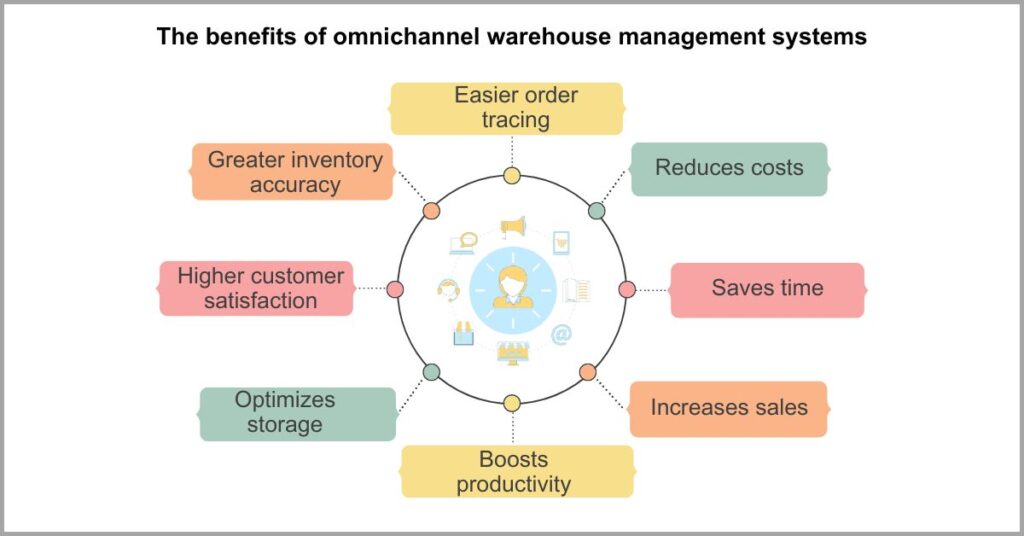
With omnichannel B2B warehouse management solutions, you can effortlessly integrate inventory across both offline and online platforms for effortless inventory management.
The result is a holistic view of not just inventory but also orders and fulfillment across all these different platforms. This is made possible by automated bulk order tracking via a central viewpoint, which reduces lead times and minimizes lost sales.
But it’s not just about giving you a consistent look at your warehouse across platforms.
It’s also about affording your customers the same benefit as well. Modern omnichannel warehouse management systems offer dedicated customer portals that provide consistent cross-platform shopping experiences for your clients.
This gives your warehouse a competitive advantage in terms of providing value by meeting customers on their platforms & on their terms with more accurate information.
9. IoT-WMS integrations
Modern WMSs are also bringing IoT into the mix.
With your WMS application serving as the brain of the operations, the Internet of Things is making it possible to connect your WMS to various hardware and software solutions which otherwise work in silos.
In fact, technology silos are rampant today, and can result in slow data-driven decision making as well as poor collaboration across departments.
A study by Forrester revealed that 80% of organizations view IoT as the most strategic technology initiative for their business. This vouches for the immense potential it holds, particularly when it comes to uniting disparate systems.
With the average warehouse using more apps and technologies than ever before and this number growing every day, the focus on IoT-WMS is because of the technology being viewed as pivotal to interconnecting fragmented systems to increase efficiency.
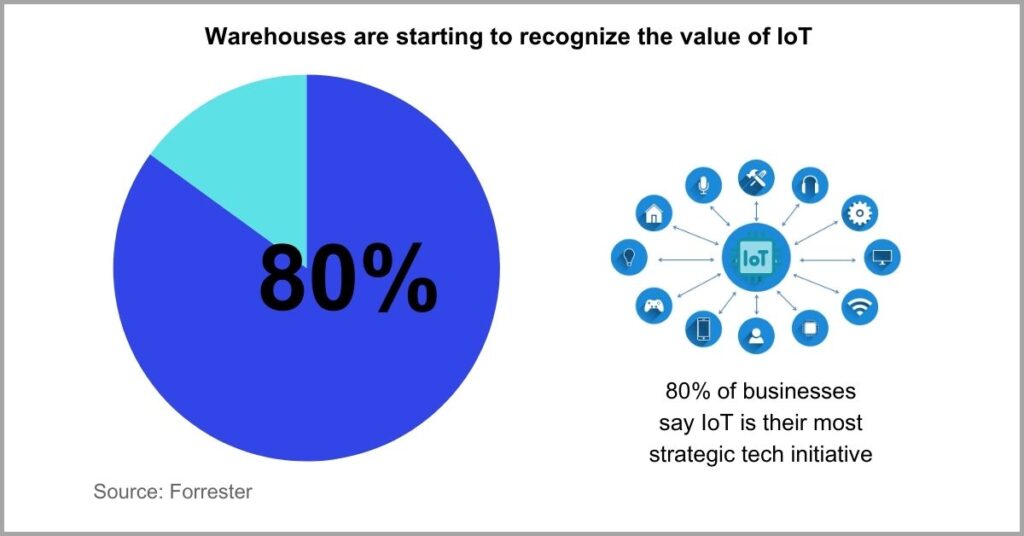
By interlinking disparate information systems, and centralizing this data in your WMS, these integrations are helping to increase business intelligence and also enhance teamwork by facilitating seamless information sharing.
So what are some existing examples of IoT and WMS integrations?
Smart shelves and cabinets certainly come to mind. These IoT devices can track important data about inventory items, including condition, quantities, and weight using sensors and feed B2B inventory management platforms with this data in real time.
You can even set automatic stock replenishment triggers based on the received input to implement more effortless inventory management while reducing the risk of stockouts.
Beyond that, modern WMS applications are also making it possible to link the system to modern warehouse automation solutions like automated guided vehicles and drones, among other critical warehouse innovations to increase warehouse efficiency.
10. Multilayer WMS cybersecurity
What are the risks of a WMS data breach?
When you incorporate a warehouse management system into your workflow, you’re giving it access to important information about your business. This may include data about proprietary products, employees and even your customers.
In the event of a WMS data breach, you can lose access to data, thereby disrupting operations while sensitive customer information can get exposed.
The situation is quite dire, given that 91% of businesses have experienced a supply chain software attack, going by findings from a Data Theorem Study. Many of these incidents include API data breaches from third-party software like WMSs.
Unfortunately, I don’t see this situation getting any easier because supply chains will only get more complex as your business expands, while digital threats will keep evolving and adapting to beat modern warehouse security strategies.
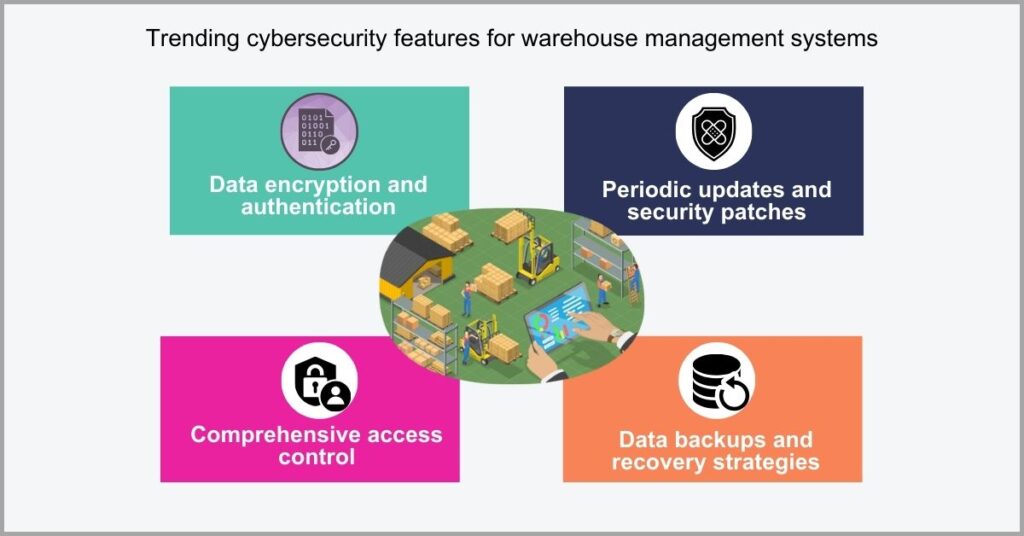
However, to stay ahead of the constantly evolving threats of today, we’re seeing warehouse management system trends like multilayer cybersecurity take center stage.
This involves WMSs utilizing several security measures, which helps to create failsafes so that in case one defense system fails, another can swoop in and save the day.
Consequently, you can reap key benefits of transloading software such as decreased risks of data breaches, which improves your warehouse’s uptime.
For example, your typical WMS comes with strict access control features to reduce exposure to sensitive data. It may also combine multi-factor authentication and firewalls to help bolster cybersecurity for your workflow even more.
Modern solutions further augment these tactics with data loss prevention functions like periodic backups. This ensures a multi-tiered warehouse management system that is less susceptible to hacking and therefore more resilient and regulatory compliant.
Conclusion
It’s hard to succeed without the right warehouse technologies.
They directly affect operational efficiency and, by extension, determine revenue.
If you fail to keep an eye on the latest trends, you can easily miss key opportunities to implement technologies to take your business forward.
A study by SoftwareConnect revealed that 39% of warehouse managers are looking for better features in warehouse management systems. Their search is fueled by the limited capabilities of legacy solutions.
By understanding the latest warehouse management system trends, you’ll leverage the right platforms to improve warehouse operations and increase business success. If you’d like a WMS that stays ahead of the curve, I recommend transloads.co.
Click to start your free transloads.co trial to get the latest WMS features for enhancing warehouse efficiency.
From inventory tracking to task management functions that raise worker performances, our software can help you improve several key areas of your warehouse’s workflow.

